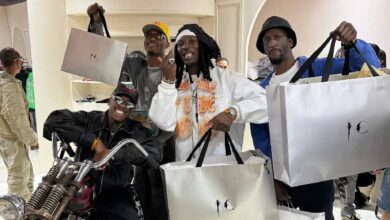Sweater weather is only the beginning. For centuries, cold climates have influenced fashion in ways that merge cultural identity, tradition, and innovation. Enter cold culture clothing—a movement that goes beyond utility to celebrate style with intention. But what exactly is cold culture clothing, and how did it evolve from niche functional wear to a global fashion statement? Let’s explore.
What Is Cold Culture? Its Influence on Fashion
At its core, cold culture refers to the lifestyle, traditions, and practices associated with living in colder climates. From the frost-laden fjords of Scandinavia to the vast, snowy plains of Canada, it’s a way of life grounded in practicality yet layered with aesthetic value.
Cold culture clothing draws inspiration from these environments, blending utility with design. Beyond warmth, this clothing speaks to those longing for fashion that reflects their connection to icy landscapes, rugged durability, and minimalistic elegance.
The Rise of Cold Culture Clothing: From Niche to Mainstream
Not too long ago, cold-weather clothing was mainly functional. Think thick coats, knitted scarves, and clunky boots solely designed to combat freezing temperatures—stylish options were few and far between. But over the last decade, cold culture clothing has carved a niche that mainstream fashion couldn’t ignore.
Brands like Canada Goose and The North Face, which traditionally catered to mountaineers and explorers, suddenly became status symbols in urban centers. Streetwear labels began incorporating puffed-up jackets and weatherproof ski styles into their collections. Today, cold culture-inspired fashion graces the runways of Paris, New York, and Tokyo, showing everyone that style doesn’t have to freeze in winter.
Celebrities and influencers, too, have contributed to its growth. Kendall Jenner in her iconic puffer coat or Gigi Hadid rocking oversized scarves made practicality chic. Cold culture clothing isn’t just about keeping warm—it’s a movement that combines functionality with trendsetting appeal.
Key Features and Design Elements of Cold Culture Clothing
What makes cold culture clothing stand out? Here are the defining features that have ensured its popularity:
1. Layering-Friendly Designs
Cold cultures have perfected the art of layering, and their clothing reflects this. Pieces like slim-fit thermal tops, oversized hoodies, and modular jackets work together seamlessly to keep wearers insulated while looking effortlessly stylish.
2. Weather-Resistant Materials
From Gore-Tex to merino wool, key materials play an essential role in cold culture clothing. These fabrics trap heat, repel moisture, and are breathable, ensuring comfort in sub-zero conditions.
3. Minimalist Chic
Many cold-culture brands lean into clean cuts, neutral tones, and understated designs inspired by the simplicity of snowy landscapes. This “less is more” approach feels fresh and modern.
4. Versatile Detailing
Practicality reigns supreme—look for features like detachable hoods, breathable vents, and pockets galore. These details elevate style while maintaining authenticity for rugged climates.
5. Sustainability Focus
Eco-friendly materials like recycled polyester or repurposed wool have become staples in many cold culture collections, addressing both ethical fashion needs and environmental impact.
Environmental and Ethical Considerations in Cold Culture Fashion
Speaking of sustainability, the rise of cold culture clothing coincides with increased awareness of the fashion industry’s environmental footprint. Traditional cold-weather items use intensive resources and animal products like fur or down feathers. Luckily, modern brands are taking a stand, offering stylish alternatives that warm hearts and bodies without harming ecosystems.
Some initiatives reshaping cold culture fashion include:
- Vegan down made from synthetic materials instead of animal-based fillers.
- Upcycled fabrics that produce durable garments with less waste.
- Transparent sourcing practices that ensure ethical labor and production processes.
Brands like Patagonia, for example, lead the charge with their recycled materials and repair policies, while others like Save the Duck have proven that high-performance fashion can forego animal products entirely.
The Future of Cold Culture Clothing: Trends and Innovations
The cold culture movement shows no signs of slowing down. Here are some innovations and trends driving the next wave of icy-cool fashion:
- Smart Fabric Technology: Clothing embedded with heating panels, moisture sensors, and UV-blocking properties is no longer science fiction. These features are becoming increasingly accessible.
- Customizable Outerwear: Jackets and coats with interchangeable linings and layered shells are making these investment pieces even more versatile.
- Artisan Revival: From handwoven Scandinavian-inspired knits to Inuit designs, traditional craftsmanship is being celebrated in contemporary collections.
- Gender-Neutral Fashion: Many cold culture brands are paving the way for inclusive, unisex designs that cater to a broader audience.
- Local Sourcing: With a focus on reducing carbon footprints, brands are turning to regionally sourced materials and fabrics that support local economies.
Case Studies: Successful Cold Culture Brands and Their Impact
1. Canada Goose
What began as a small brand making jackets for extreme arctic expeditions became a global phenomenon. Known for its luxury puffers, Canada Goose is synonymous with premium cold-weather style.
2. Norwegian Wool
Fusing traditional Scandinavian knitting techniques with modern tailoring, this brand epitomizes cold culture sophistication.
3. Patagonia
An eco-friendly pioneer, Patagonia has revolutionized sustainable outerwear. Their commitment to recycled materials and repairable garments has inspired numerous brands to follow suit.
4. Moncler
Blending alpine authenticity with high fashion, Moncler has bridged the gap between functional winter gear and luxury wear.
These brands have shown it’s possible to innovate while staying true to the roots of cold culture — a remarkable feat that resonates worldwide.
How to Embrace Cold Culture in Your Personal Style
Now that you’re familiar with the origins and rise of cold culture clothing, it’s time to add some into your wardrobe! Here are a few tips:
- Invest in Hero Pieces: Start with versatile essentials like a quality parka, a merino wool sweater, and insulated boots.
- Play with Textures: Pair sleek materials like nylon or leather with cozy knits for a balanced, elevated look.
- Stick to a Cohesive Color Palette: Neutral tones like white, black, and grey create that understated wintry charm. Add subtle pops of color with accessories.
- Layer Thoughtfully: Combine snug-fitting layers with oversized outerwear for both warmth and chic proportions.
Fashion Forward Thinking: The Role of Cold Culture in the Future
The Sudadera Cold Culture spans beyond practicality; it represents adaptability, sustainability, and artistic evolution in fashion. Whether you’re navigating icy streets or hitting the slopes, there’s something deeply aspirational about designs that conquer the chill while looking timelessly cool.
The next time you reach for your favorite winter coat or scarf, remember that you’re part of a broader movement—a celebration of style that keeps the cold at bay while reshaping fashion norms.
Interested in exploring more cold culture styles or finding your next cold-weather companion? Share your thoughts or recommendations in the comments below and hit that “Share” button to keep the discussion going!




